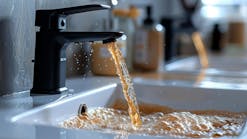Top 5 Rising Consumer Trends Related to Water Quality
Brian Campbell founder for WaterFilterGuru.com. Campbell can be reached at [email protected].
Today’s consumers are more aware than ever before of their water quality. While many parts of the world are fortunate to have access to clean drinking water, not everyone is happy with the quality of the water they receive.
This article highlights the top five rising consumer trends related to water quality that are changing the face of the water industry.
RELATED: Using the WQA Consumer Opinion Study to Define Your Marketing Strategy
1) Increased Demand for Filtered Water
An NSF study found that more than half of Americans are concerned about their drinking water quality, and a growing number of people are taking action to filter water in their own homes.
As consumers become more aware of the risks and dangers of the trace contaminants their drinking water contains, fewer and fewer people are keen to drink their water straight from the tap.
One study estimated that nearly 60 million Americans did not drink their tap water in 2017 to 2018, and that this number has sharply increased since then.
2) Rising Importance of Sustainability
Consumers enjoy the quality of bottled water, but as we are becoming more aware of the consequences of filling landfills with single-use plastics, the use of bottled water is on the decrease.
A YouGov study from 2020 found that people working remotely decreased their bottled water consumption from 58% to 30%, and that the percentage of people buying bottled water for consumption at home fell from 42 to 32.
It is likely that many consumers are choosing to filter their tap water as a more sustainable means of accessing cleaner, fresher water.
3) Increased Water Insecurity
The study that estimated 60 million Americans did not drink their tap water also suggested that some consumers might be avoiding water that was “safe” due to a lack of trust in their local water facility.
According to the study’s author, this “water insecurity” arises from tap water distrust and is a growing problem in the U.S. The study found that the prevalence of adults who do not drink tap water has increased by 40% since 2014, when the Flint, Michigan, water crisis began. The prevalence of children who do not drink tap water had risen even higher, at 63%.
What does this tell us? That an overwhelming number of Americans have been exposed to evidence from a real-life disaster and responded with distrust.
The study argues that exaggerated news reports encourage consumers to distrust water quality even when there isn’t an issue — but when trace contaminants exist in all public water supplies, it’s equally as likely that consumers simply do not want to risk drinking even low levels of harmful particulates.
4) Demand for Convenient Filtration Solutions
There are thousands of water treatment solutions on today’s market, but not all of them are convenient for the user. Many people who decide to filter their water from home are switching from using bottled water, which is very convenient — so they are looking for something as little fuss and low-hassle as possible.
The NSF survey mentioned in point 1 found that of all participants, 24% used built-in refrigerator devices and 18% used water treatment pitchers. This survey dates back to June 2018, and while there are no updated studies to refer to, it is likely that the rise in tap water distrust and eco-consciousness has increased these numbers significantly.
Refrigerator filters and filter pitchers are two of the most convenient water treatment devices, requiring minimal installation effort and simple maintenance. With these devices being the most popular, it suggests that consumers favor convenience — and perhaps also affordability, as these systems are the cheapest to buy and maintain — over complexity.
5) Growing Interest in Water Softening Systems
Potentially dangerous contaminants are not the only drinking water quality issue concerning consumers. A U.S. Geological Survey study found that over 85% of water in the US is hard. It is unsurprising that interest in water softening solutions is on the rise, considering the consequences of hard water: stained sinks and bathtubs, inefficient appliances, dry skin and hair, and more.
Water softeners can eliminate hard water problems, making them an appealing choice for consumers dealing with expensive water hardness issues in their homes.
In Summary
Nowadays, consumers have more control over their water quality than they have ever had before.
Buying bottled water is now no longer the only alternative to drinking poor-quality tap water. And with increasing distrust in water suppliers, more and more consumers are turning to at-home water treatment solutions as a cheaper and more environmentally-friendly means of accessing better-quality water.
Manufacturers have certainly responded to this increased demand, and there are now thousands of water treatment devices to choose from. The cost of such thorough water treatment on a large scale is too expensive to consider, leaving it down to the consumer to filter their water at home. It is likely that demand will only continue to increase as more and more consumers become aware of water quality issues in the U.S.



